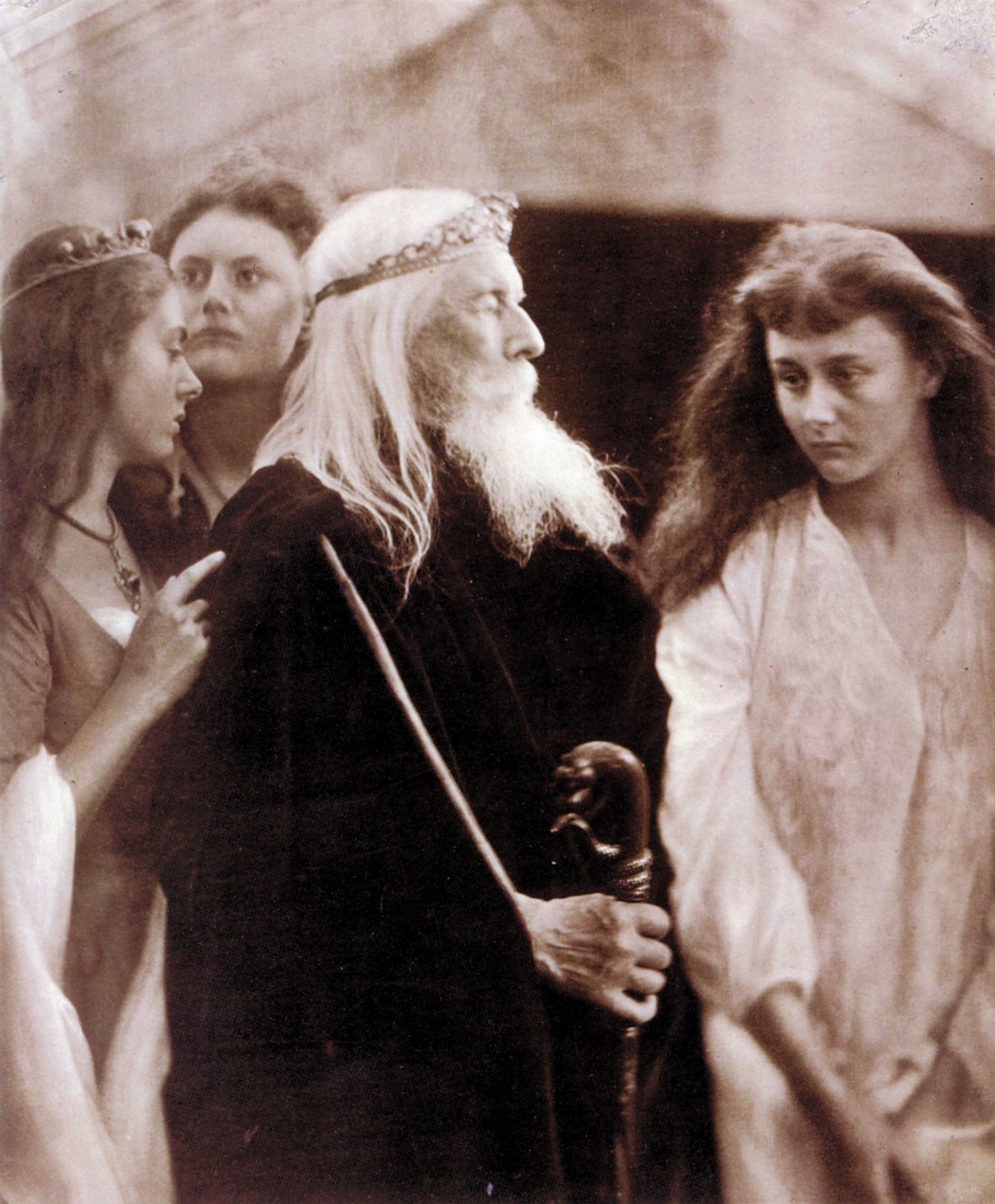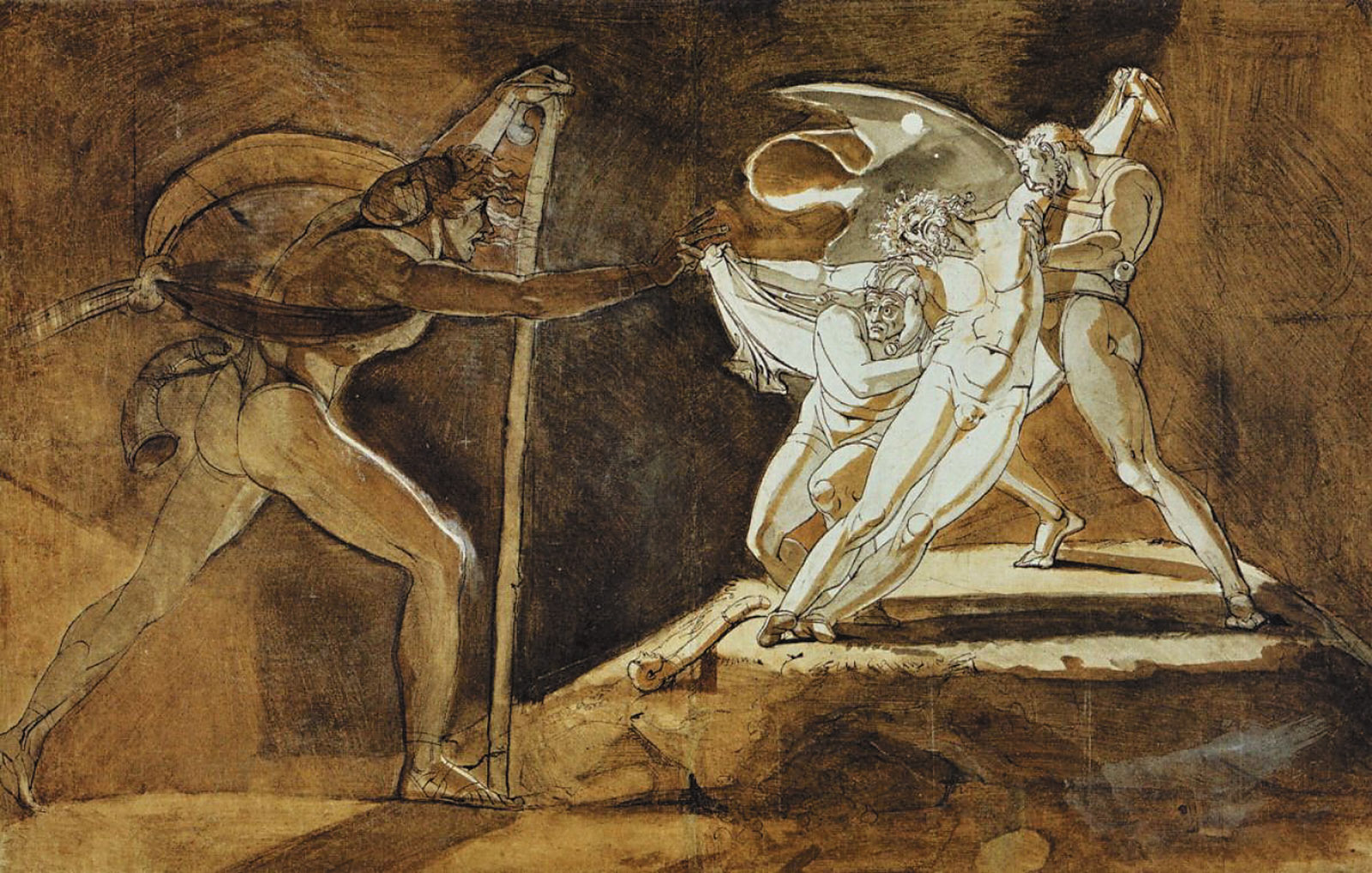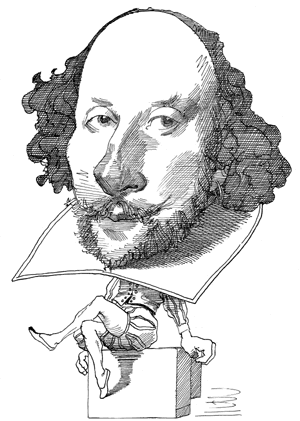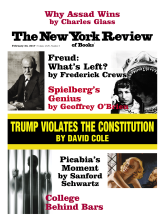Here is the problem: Shakespeare’s King Lear was first printed in 1608 in one of the paperback-size, inexpensive editions known as Quartos and then again in 1623 in the First Folio, the large, handsome, posthumously published collection of his plays, edited by two of his friends and fellow actors. The two texts of the tragedy are not identical. The Quarto Lear contains almost three hundred lines that do not appear in the Folio, while the Folio text includes around a hundred lines that are not in the Quarto. In addition there are hundreds and hundreds of variants, some of them trivial but many of them substantive and intriguing. If you care deeply about the play—if you have undertaken to stage it or to edit it or simply to read it with close attention—you have to grapple with the differences and decide what to make of them.
It was in the eighteenth century that the differences between the two texts were first noticed in print. As Margreta de Grazia showed in her fine book Shakespeare Verbatim (1991), the meteroic rise in Shakespeare’s cultural prestige led in this period to an interest in establishing “authentic” texts.1 (It led as well to regularizing the spelling of the author’s name, which had hitherto flickered among such possibilities as Shakespear, Shakspere, Shaxpere, Shaxberd, and Schaftspere.) Eighteenth-century editors and their successors proceeded routinely to stitch together the 1608 Quarto and the 1623 Folio texts of Lear, salvaging as many lines as possible from both and choosing what they thought Shakespeare must have written or what, in the light of their aesthetic judgment, seemed to them most effective or tasteful.
Often the task was straightforward enough. In the Quarto Lear, after the two elder daughters have uttered their oily flatteries, the king turns to his youngest:
Lear: What can you say to win a third more opulent
Than your sisters?
Cordelia: Nothing, my lord.
Lear: How? Nothing can come of nothing. Speak again.2
And in the Folio:
Lear: What can you say to draw
A third more opulent than your sisters? Speak.
Cordelia: Nothing, my lord.
Lear: Nothing?
Cordelia: Nothing.
Lear: Nothing will come of nothing. Speak again.
Subtle as the differences are here—the basic situation, after all, is identical—the superiority of the Folio to the Quarto seems apparent. The pause between the old king’s question and his command gives the actor who plays Cordelia the opportunity to command the stage with silence. And the repetition of “nothing” haunts the entire play. Lear is a great fugue on the terrible power of “nothing” and its cognates. At the close, holding his dead daughter in his arms, Lear howls his grief: “Never, never, never, never, never.” That, in any case, is the line in the Folio; in the Quarto, Lear repeats the word only three times.
The Quarto’s inadequacies and blunders were sufficiently apparent to have persuaded some scholars that it was a pirated text, not deliberately released for publication by Shakespeare’s playing company, the King’s Men, but written down from memory by one or more shady actors and sold to an unscrupulous printer eager to turn a quick profit with a shoddy piece of goods.3 The Folio’s editors seemed to encourage such a view when they compared their own Shakespeare product, “Published according to the True, Original Copies,” with the competition: “stolen and surreptitious copies, maimed and deformed by the frauds and stealths of injurious imposters.”
But that was obviously a sales pitch, and it hardly accounted for the absence in the Folio text of King Lear of those three hundred lines in the Quarto, lines that included revealing exchanges between Lear and the Fool, the mad Lear’s arraignment of his wicked daughters, and the astonishing moment when the nameless servants, who have witnessed the torture and blinding of the Earl of Gloucester, come forward, as soon as the coast is clear, to offer what little assistance they can: “I’ll fetch some flax and whites of eggs to apply to his bleeding face. Now heaven help him!” Even when they were assumed to be the record of actors’ improvisations in a “bad Quarto,” these lines were for centuries routinely added to virtually all editions of the great tragedy.
Then, in the 1970s, in a series of highly technical studies, the immensely learned bibliographer Peter Blayney demonstrated that the Quarto Lear was not a text based on memorial reconstruction.4 It was the first time that the printer, Nicholas Okes, had been responsible for printing a play, and most of the flaws in the Quarto derived from problems characteristic of book production in this period: typical signs of carelessness and haste; evident difficulties that the compositor—the workman who set the type—had reading the scrawled handwriting in the manuscript; unfamiliarity with scripts that frequently switch, as Lear does, between verse and prose; an apparent shortage of blanks that fill the space between the end of verse lines and the margins; and so forth. But Okes’s printing house, Blayney showed, very likely had access to Shakespeare’s own manuscript. The underlying text then—the document that generated the play printed in 1608—had the authority that editors crave. Blayney’s remarkable work has generated a rare consensus in a field that is ordinarily a battleground.
Advertisement
Why, then, were there two versions? A plausible explanation, one that immediately found strong though not universal support, was revision. In a 1983 collection of essays, The Division of the Kingdoms: Shakespeare’s Two Versions of ‘King Lear,’ a range of scholars made the case that the author himself must have undertaken the task, so that it was now possible, as John Jones put it in a subsequent book, to watch “Shakespeare at Work.”5 In 1986, The Oxford Shakespeare published the Quarto and Folio texts of Lear in sequence, and beginning in 1997 The Norton Shakespeare, of which I am the general editor, printed them on facing pages, so that readers could easily compare them. At the same time, the Norton included a third Lear, one in which the two texts were braided together, so that readers could, as I wrote, “encounter the tragedy in the form that it assumed in most editions from the eighteenth century until very recently.”6
Another motive for this inclusion was lingering uncertainty—my own and that of many other scholars—about the source of the revisions and uncertainty too about the nature of the manuscripts with which the original editors of the Quarto and the Folio worked. Were they actually in Shakespeare’s own hand or in the hand of a scribe? Were they written, as it were, in the theater of the playwright’s mind or for particular companies of actors at two particular moments? Did members of the company intervene and propose changes? Did the manuscripts contain the jottings of the persons who directed and mounted actual productions? In the case of Lear, was there any way to determine if Shakespeare was one of those persons? And what exactly went on when the manuscripts—quite possibly filled with false starts, second thoughts, missing stage directions, unclear distinctions between verse and prose, inserted or deleted lines—entered the printing house?
For the fact is that none of Shakespeare’s own manuscripts—or the copies made by scribes that were presented to the government censor for authorization, or the copies sold to the printing house, or the parts written out for the original actors, or the “prompt books” prepared for individual productions—have survived.7 Evidently, either they remained in use until they fell apart, or they were lost when the Globe Theatre burned to the ground on June 29, 1613, or they were discarded as worthless and used to wrap fish. All claims about the relationship between what we read in this or that edition and what Shakespeare actually wrote have to be hedged about by a certain modesty, the modesty of never knowing exactly.
2.
But not if you are Sir Brian Vickers. The honorific, rarely on display in academic monographs but included here on the title page of The One King Lear, seems to signal a larger sense of entitlement: the ability to claim a deep and virtually absolute certainty on matters that have baffled almost everyone else. Vickers believes that he has solved once and for all the problem of the divergent Quarto and Folio Lear. There is, as the title declares, only one King Lear, the one that Shakespeare conceived, brought to perfection, and bequeathed to posterity. The problems have all arisen from a succession of fools, incompetents, and—more recently—scoundrels. The scholar-knight, armed with his hard-won proofs and riding in on a charger provided by Harvard University Press, proposes at last to set matters right.
The first 169 pages of The One King Lear are devoted to the Quarto; their focus is on the small workshop owned and operated by Nicholas Okes. It is here, the argument goes, that the first major crime against Shakespeare’s tragedy was committed, the cruel cutting of one hundred lines (those lines that appear only in the Folio). Okes had been commissioned to print the play by the stationer Nathaniel Butter—the period’s equivalent of a publisher. Based on the length of the manuscript that he was shown, Okes must have given Butter an estimate of the cost, including the amount of paper he would need to complete the job. But his estimate was not correct, Vickers surmises, and instead of going back and asking for more money, once he discovered his mistake, Okes decided to trim and discard parts of the text he had contracted to print.
Advertisement
Printers in the period (and for that matter today) had leeway on how to format a play text: wide or narrow margins; the use of abbreviations; elaborate or simple decorations at the beginning and the end; spaces between speeches or before or after stage directions; even the deliberate printing of verse as prose (since the latter saves space). This leeway was particularly useful when the printer set the text not seriatim—page by page, following the order of the manuscript—but “by forme,” a more demanding but type-efficient and flexible method that allowed individual pages to be set out of order. As it happens, Blayney had been able to demonstrate in the 1970s that most of the Quarto Lear was set seriatim, so the usual reasons for trimming and compressing were not there. Nonetheless, Vickers insists, Okes, at once wildly incompetent and wildly irresponsible, blundered so badly in his reckoning that he panicked and decided to cut the play he had contracted to print.
Fortunately, The One King Lear maintains, the missing hundred lines—the very lines that the wretched Okes allegedly cut in order to save paper—were preserved in the Folio Lear. What then accounts for the three hundred lines in the Quarto version that do not appear in the Folio? Here Vickers abandons his paper hypothesis: they were, he maintains, probably cut by Shakespeare’s company, the King’s Men, to speed up the pace of a performance. This is a highly familiar and widely shared view; the only difference is that Vickers thinks Shakespeare himself could have had nothing to do with it. The cuts seriously damaged the play “by removing elements vital to its aesthetic integrity and historical meaning.”
Once again, then, Shakespeare’s masterpiece had fallen into the hands of rude mechanicals, this time his own friends and colleagues. Might it be possible that the members of the hugely successful playing company, of which Shakespeare was part owner and principal playwright, knew at least something about how to stage a valid production of King Lear? Not in Vickers’s opinion.
The chronicle of incompetence continues, in his sour view, into the present (though it should be said that the author’s reading in the scholarship produced over the last ten years seems to have dwindled). It extends even to Peter Blayney, whose definitive 740-page analysis of the first Quarto Lear Vickers deems to be “not entirely satisfactory,” and to the brilliant bibliographer D.F. McKenzie, who, despite having taught himself to set type by hand, did not, we are told, really consider “the dynamics of typesetting.”
Vickers reserves his full measure of contempt for the advocates of the “two versions” theory of Lear, devoting the final section of his book to a polemic against the members of this alleged cabal. Their leader, Gary Taylor, is shockingly “blind,” the consequence of his “narrow conception of ‘plot’” and “short attention span.” (As an academic pugilist, Taylor, it should be noted, is equal to this exchange of blows.) He and his followers are “unable to cope with moral issues fundamental to this play”; they display “a disturbing lack of empathy”; they diminish “the discipline of literary criticism” by their “pettifogging objections.” “Self-regarding, self-promoting,” they have only managed to make their way in the academic world by behaving as “courtroom advocates rather than scholars, committed to promoting one interpretation and ignoring all evidence to the contrary.” Their views “represent the collapse of literary criticism as a response to a work’s ethical and emotional design.” A critic with Taylor’s account of Shakespeare’s tragedy “has lost contact with the play and should seek some other occupation.”
“Gr-r-r—there go, my heart’s abhorrence!/Water your damned flower-pots, do!” Robert Browning’s celebrated depiction in “Soliloquy of the Spanish Cloister” of the bilious loathing that builds up inside monastic communities captures the aggrieved tone with which The One King Lear invests these highly academic arguments over what most of the world would regard as minutiae. Despite his evident worldly success, Vickers has long cultivated an impressive current of anger, and with it a desire to expose and humiliate those he regards as his enemies. He is particularly good at marshaling technical details that seem to reveal a hapless opponent’s embarrassing blunders of scholarship. He knows that scholars find it extremely painful to be caught out even in small factual errors. I have made my share, and I can bear witness that they burn, in Shakespeare’s phrase, like the mines of sulphur.
But as my father never tired of saying, people who live in glass houses shouldn’t throw stones. And the truth is that all scholars, including Sir Brian Vickers, live in glass houses. But perhaps something else is occurring here, some dark nemesis signaled in this book perhaps by the absence of a bibliography, or by the scanty index, or by the startling number of errors made by someone who excoriates careless printers and proofreaders. Why did no one catch “schholar” and “obsreved”? Who allowed the book’s stirring peroration to assert that Shakespeare “had no reason to go back to his greatest pay”?
These typos, like tiny pebbles, are foretastes of the rocks that have now come crashing through Vickers’s glass walls. For three weeks last May, Holger Schott Syme, a professor at the University of Toronto, undertook what has been called the world’s longest act of Twitter-criticism: a detailed, scholarly critique of The One King Lear, often sentence-by-sentence, in a succession of tweets—over five hundred of them.8 Syme’s appalled accumulation of entries, which among academics has quickly become a cult classic, details an array of fundamental contradictions, misstatements, and errors throughout the book, including a disastrous miscounting of the number of pages in a text Vickers trumpeted as one of his crucial pieces of supporting evidence for Okes’s paper crisis. Under Syme’s heated blows, which have now been reiterated and supplemented by other textual scholars, the whole structure of argument meant to uphold the book’s central claim—that there was a single, supreme authorial manuscript twice damaged by both the Quarto and Folio editors—has melted into thin air:
And like the baseless fabric of this vision,
The cloud-capped towers, the gorgeous palaces,
The solemn temples, the great globe itself,
Yea, all which it inherit, shall dissolve,
And, like this insubstantial pageant faded,
Leave not a rack behind.
All that is left is the longing for access to something that does not now exist and may never have existed.
3.
Are we back to square one? Not exactly. In his book Theatre and Testimony in Shakespeare’s England (2012), Holger Syme—he of the current tweet-critique fame—showed that what seem like transcripts of the spontaneous testimony of witnesses in Elizabethan court records are in fact scripted speeches, composed in advance, reviewed and modified for the occasion, and read out by the court clerk. It is a mistake, Syme argued, to long for the “original text” that lay behind the court record, as if that text somehow carried a special authenticity. Not only do those documents no longer exist, they also only made sense within the larger institutional frame of what he calls a whole culture of mediation.9
Shakespeare fully participated in such a culture. He was a sharer in the playing company, part owner of the theater, and a sometime actor, as well as a dramatist. He wrote his plays from deep within his institution, one in which he knew that his words would be staged and restaged by a shifting group of professional actors on particular, constantly changing occasions. Perhaps, in his retirement, had he lived longer—he died at only fifty-two—he would have given thought not merely to his real estate investments but to a different part of the estate he would leave to his heirs: he might have attempted to cast each of his plays in what he thought was its ideal, final form.10 Or perhaps not. We simply do not know.
Vickers is haunted by what he calls Shakespeare’s “first, superbly constructed version” of King Lear. He is convinced that he can salvage it from the vandalism done by its first editors, and he believes that his own contemporary enemies are standing in the way of both scientific truth and aesthetic perfection. Like most Bardolators, I share the daydream of the master text, but it is not at all clear that Shakespeare shared it, and nothing in Vickers’s elaborate account of mistaken paper estimates, stupid actors, and conniving scholars gets us a jot closer to a version he belligerently insists must once have existed. What we have instead are the imperfect, uncertain early seventeenth-century printed traces.
As for the scientific method Vickers proudly thinks his work exemplifies, the flaws mercilessly exposed by his critics are only a part of the problem. A deeper issue has to do with his craving for the Thing Itself, fixed in its form and stripped of the cruel distortions of time and place. That craving seems to me fundamentally incompatible with the nature of the living theater and of Shakespeare’s particular genius in fashioning texts that lend themselves to ceaseless metamorphosis.
It is incompatible too with how the distinguished historian of science Helga Nowotny, in her book The Cunning of Uncertainty (2015), characterizes modern science, an enterprise built on the underlying premise, as she puts it, that “it could be otherwise.”11 The creative uncertainty of science, she writes, “thrives on ambivalence”; it suspends routine; it battens on the unexpected; it insists that the enormous amounts of data that are collected and classified depend upon interpretation, so that it is always “left to the user to figure out what they mean.” For all of these reasons, science has been spectacularly successful in offering insights into complex adaptive biological systems, systems that are “open, non-linear, and self-organized.” It has a powerful bearing as well on competitive enterprises committed to ceaseless innovation, enterprises whose profit arises, as the economist Frank Hyneman Knight put it almost a century ago, “out of the inherent, absolute unpredictability of things, out of the sheer, brute fact that the results of human activity cannot be anticipated.”
Nowotny uses “the cunning of uncertainty” to characterize such fields as genetic engineering, big-data culturomics, economic modeling, and the like, but it is a concept that perfectly characterizes the fascination of Shakespeare and, specifically, the elusive and astonishing flexibility of the Shakespearean text. Each of his great plays is an adaptive, open system, complex, unfixed, and unpredictable. Shakespeare was the master of creative uncertainty and hence of ongoing, vital cultural mobility. His enduring achievement thrives on the fact that there is not and has never been “the one King Lear.”
-
1
Margreta de Grazia, Shakespeare Verbatim: The Reproduction of Authenticity and the 1790 Apparatus (Oxford University Press, 1991). ↩
-
2
The History of King Lear (Q1) 1.1.73–76. All citations from Shakespeare are to The Norton Shakespeare, third edition, edited by Stephen Greenblatt et al. (Norton, 2016). In the Folio, the play is titled The Tragedy of King Lear. ↩
-
3
On the evidence for pirated texts, see especially Laurie Maguire, Shakespearean Suspect Texts: The “Bad” Quartos and Their Contexts (Cambridge University Press, 1996). Maguire does not think that Q1 Lear is a pirated text. ↩
-
4
Blayney’s highly technical analyses formed the basis of his book The Texts of “King Lear” and Their Origins (Cambridge University Press, 1982). The hypothesis that the 1608 Quarto was not a memorial reconstruction but rather a flawed printing job set from Shakespeare’s own manuscript was first advanced in 1931 by the scholar Madeline Doran of the University of Wisconsin. ↩
-
5
The Division of the Kingdoms: Shakespeare’s Two Versions of “King Lear,” edited by Gary Taylor and Michael Warren (Oxford University Press, 1983); John Jones, Shakespeare at Work (Oxford University Press, 1995). ↩
-
6
The Norton Shakespeare second edition (Norton, 2008), p. 2333. ↩
-
7
The only exception, the possibility that Hand D in the manuscript play called Sir Thomas More is Shakespeare’s, is almost no help, for the play was probably never performed and, more importantly, it was not printed in Shakespeare’s time, so that scholars cannot study what happened in the printing house. ↩
-
8
“Live-Tweeting The One King Lear,” on the website Dispositio, February 6, 2016; at www.dispositio.net/archives/2275. Syme followed up his tweet storm with a lengthy review of Vickers’s book in the Los Angeles Review of Books, September 6, 2016, to which Vickers has now written a still-longer response (November 6, 2016). ↩
-
9
Holger Schott Syme, Theatre and Testimony in Shakespeare’s England: A Culture of Mediation (Cambridge University Press, 2012). ↩
-
10
The strongest recent argument for Shakespeare’s interest in his plays as free-standing works of literature is Lukas Erne, Shakespeare as Literary Dramatist (Cambridge University Press, 2003). On the transformation of Shakespeare’s scripts into books, see Erne, Shakespeare and the Book Trade (Cambridge University Press, 2013); Douglas A. Brooks, From Playhouse to Printing House: Drama and Authorship in Early Modern England (Cambridge University Press, 2000); Gabriel Egan, The Struggle for Shakespeare’s Text: Twentieth-Century Editorial Theory and Practice (Cambridge University Press, 2010); David Scott Kastan, Shakespeare and the Book (Cambridge University Press, 2001); Zachary Lesser, Renaissance Drama and the Politics of Publication: Readings in the English Book Trade (Cambridge University Press, 2004); Sonia Massai, Shakespeare and the Rise of the Editor (Cambridge University Press, 2007); and Andrew Murphy, Shakespeare in Print: A History and Chronology of Shakespeare Publishing (Cambridge University Press, 2003). ↩
-
11
Helga Nowotny, The Cunning of Uncertainty (Polity, 2016), xiv. ↩






